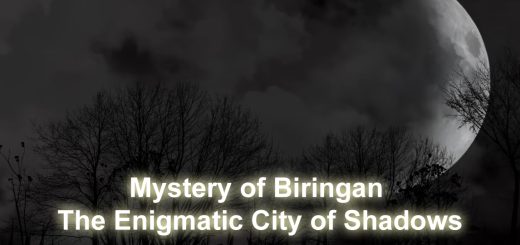The Yamashita Treasure

The tale of the Yamashita Treasure is one of the most captivating stories in Philippine history. A blend of fact, fiction, and the enduring allure of hidden riches. Named after General Tomoyuki Yamashita, a commander of the Imperial Japanese Army during World War II, this treasure hunt has sparked countless expeditions, theories, and legends. Let’s explore the origins of this treasure, its historical context, and the ongoing fascination surrounding it.
The Origins of the Yamashita Treasure
Historical Background
As World War II came to a close, Japan faced imminent defeat. General Yamashita was tasked with overseeing the Japanese occupation of the Philippines and is said to have hidden a vast treasure of gold and valuables in the archipelago during the chaotic final days of the war. This treasure allegedly included loot stolen from conquered territories across Asia, including gold bullion, jewelry, and other precious artifacts.
The Legend Unfolds
According to various accounts, Yamashita and his troops concealed the treasure in several locations throughout the Philippines. Some stories claim that they buried it in caves, while others suggest it was hidden beneath the foundations of structures, such as schools or churches. As Japanese forces retreated, rumors of the hidden treasure began to spread, igniting the imagination of treasure hunters and locals alike.
The Hunt for Treasure
Treasure Hunters and Expeditions
Since the end of the war, the quest for the Yamashita Treasure has attracted thousands of treasure hunters, ranging from amateur enthusiasts to professional prospectors. Numerous expeditions have been launched, some with high-tech equipment and elaborate plans. Many have claimed to have found portions of the treasure, only to meet with skepticism or misfortune.
Government Involvement
The Philippine government has also been involved in the treasure hunt. In the 1970s, President Ferdinand Marcos declared the treasure a national asset, leading to various treasure-hunting permits and disputes over ownership. This involvement has only added to the intrigue, with accusations of corruption and cover-ups swirling around the issue.
Myths and Misconceptions
The Mystery of the Treasure’s Existence
Despite numerous claims and extensive searches, the existence of the Yamashita Treasure remains unproven. Many believe it to be a myth, a product of war-time rumors and local folklore. Skeptics argue that the treasure may have never existed or was never as vast as the legends suggest.
The Role of Folklore
The story of the Yamashita Treasure has become a part of Philippine folklore, with various iterations adding to its allure. Some tales involve supernatural elements, such as curses or guardians protecting the treasure, which only deepens the mystery. These stories have become intertwined with the national narrative, reflecting the historical trauma and resilience of the Filipino people.
Cultural Impact and Legacy
The Yamashita Treasure legend has had a significant impact on Filipino culture. It has inspired films, books, and television shows, embedding itself in popular culture. Additionally, the quest for treasure has contributed to the development of local tourism, with areas associated with the legend becoming attractions for thrill-seekers.
On a final note
The Yamashita Treasure remains one of the Philippines’ most enduring legends, captivating the hearts and minds of those intrigued by the possibility of hidden wealth. While the reality of the treasure’s existence is shrouded in uncertainty, the stories surrounding it continue to thrive, reflecting a rich tapestry of history, culture, and human curiosity.
Whether you see the Yamashita Treasure as a tantalizing myth or a historical reality, its legacy serves as a reminder of the past’s complexities and the allure of the unknown. As treasure hunters continue their quests, the legend lives on, a testament to the enduring power of stories and the dreams they inspire.
References:
https://en.wikipedia.org/wiki/Yamashita%27s_gold
https://www.history.com/shows/lost-gold-of-world-war-ii










